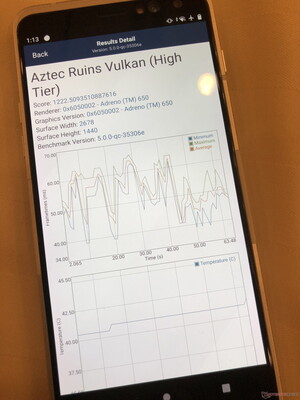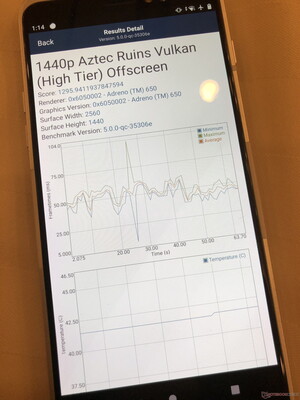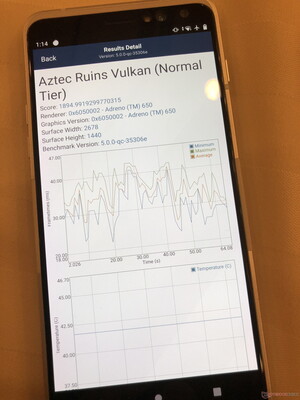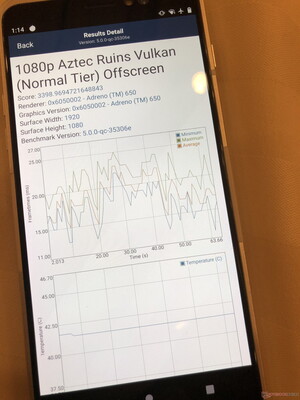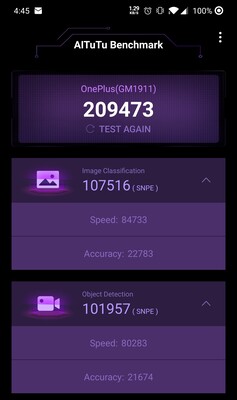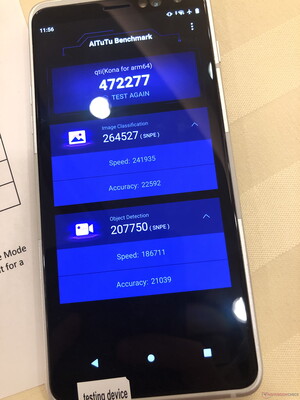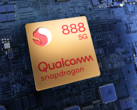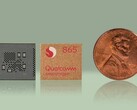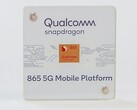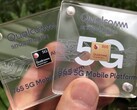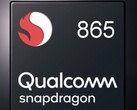Earlier this month, Qualcomm unveiled its latest Snapdragon SoC lineup that includes the flagship Snapdragon 865 and the upper mid-range Snapdragon 765/765G. During the event, we got a chance to take the Snapdragon 865 (SD 865) for a short test drive on a Qualcomm reference device. Here are the results of some of the benchmarks and a comparative analysis of how good the new SoC is, compared to the Snapdragon 855 (SD 855) and Snapdragon 855+ (SD 855+).
Note: All tests were run with Performance Mode turned on. Performance Mode does not boost clocks but offers faster clock ramping and shifts the load from little to big cores faster. OEM devices may change how Performance Mode is implemented depending on battery life targets.
CPU benchmarks
For testing the CPU, we ran AnTuTu v8 and Geekbench 5. Overall system performance was measured using the PCMark for Android Work 2.0 test. In AnTuTu v8, we see up to a 15% increase in the total score compared to the SD 855+ while there is a substantial increase by about 48% compared to the SD 855. Similarly, the CPU-only score shows a respectable 25% improvement over the SD 855+ and nearly a 60% lead over the SD 855.
In Geekbench single core, the SD 865 scores 932 points, a 29% improvement over the SD 855 in the Google Pixel 4 and a 22% improvement over the SD 855+ in the Asus ROG Phone 2. In multi-core, the SD 865 shows about a 37% improvement over the SD 855 and SD 855+. Interestingly, the performance gap with the 855+ was comparatively narrower when the OnePlus 7T Pro is considered. Compute performance seems to be up by a decent 15% compared to the SD 855.
The Apple A13 Bionic has traditionally been the leader when it comes to mobile SoCs and this holds true even now. However, Qualcomm has been able to bridge the gap significantly in multi-core Geekbench, coming within 4% of the A13 Bionic. The A13 is still the leader when it comes to raw single-core scores. The SD 865 handily beats the Kirin 990 in the Huawei Mate 30 Pro in both single-core and multi-core tests.
The SD 865 also brings overall boosts in productivity as evidenced by the 20% increase in PCMark Work 2.0 score compared to the SD 855 and the Kirin 990.
Qualcomm claims up to 25% performance improvement with the new Kryo 585 over the Kryo 485 in the Snapdragon 855 despite having similar clocks and we see that this holds true for the most part in these tests. The performance increase could be attributed to the IPC improvements in the Cortex-A77 chips combined with an increased L3 cache (4 MB).
| AnTuTu v8 | |
| Total Score (sort by value) | |
| Qualcomm Snapdragon 865 Reference Device | |
| OnePlus 7T Pro | |
| Asus ROG Phone 2 | |
| Google Pixel 4 | |
| Apple iPhone 11 Pro | |
| Huawei Mate 30 Pro | |
| CPU (sort by value) | |
| Qualcomm Snapdragon 865 Reference Device | |
| OnePlus 7T Pro | |
| Asus ROG Phone 2 | |
| Google Pixel 4 | |
| Apple iPhone 11 Pro | |
| Huawei Mate 30 Pro | |
| GPU (sort by value) | |
| Qualcomm Snapdragon 865 Reference Device | |
| OnePlus 7T Pro | |
| Asus ROG Phone 2 | |
| Google Pixel 4 | |
| Apple iPhone 11 Pro | |
| Huawei Mate 30 Pro | |
| MEM (sort by value) | |
| Qualcomm Snapdragon 865 Reference Device | |
| OnePlus 7T Pro | |
| Asus ROG Phone 2 | |
| Google Pixel 4 | |
| Apple iPhone 11 Pro | |
| Huawei Mate 30 Pro | |
| UX (sort by value) | |
| Qualcomm Snapdragon 865 Reference Device | |
| OnePlus 7T Pro | |
| Asus ROG Phone 2 | |
| Google Pixel 4 | |
| Apple iPhone 11 Pro | |
| Huawei Mate 30 Pro | |
| Geekbench 5.0 | |
| 5.0 Single-Core (sort by value) | |
| Qualcomm Snapdragon 865 Reference Device | |
| OnePlus 7T Pro | |
| Asus ROG Phone 2 | |
| Google Pixel 4 | |
| Apple iPhone 11 Pro | |
| Huawei Mate 30 Pro | |
| 5.0 Multi-Core (sort by value) | |
| Qualcomm Snapdragon 865 Reference Device | |
| OnePlus 7T Pro | |
| Asus ROG Phone 2 | |
| Google Pixel 4 | |
| Apple iPhone 11 Pro | |
| Huawei Mate 30 Pro | |
| OpenCL Score 5.0 (sort by value) | |
| Qualcomm Snapdragon 865 Reference Device | |
| OnePlus 7T Pro | |
| Asus ROG Phone 2 | |
| Huawei Mate 30 Pro | |
| PCMark for Android - Work 2.0 performance score (sort by value) | |
| Qualcomm Snapdragon 865 Reference Device | |
| OnePlus 7T Pro | |
| Asus ROG Phone 2 | |
| Google Pixel 4 | |
| Huawei Mate 30 Pro | |
GPU Benchmarks
The Adreno 650 GPU also shows considerable improvements over the Adreno 640 in GPU benchmarks. However, the benefits do not seem to be perceivable across all tests. In 3DMark Slingshot tests, we see up to a 42% increase in performance in OpenGL ES 3.1 and up to a 47% boost in Vulkan 1.0 compared to the Adreno 640. The difference is reduced to about 20% when compared with the Adreno 640 with boosted clocks in the SD 855+. We also see good leads in 3DMark OpenGL ES 3.1 tests compared to the A13 Bionic.
GFXBench is where the Adreno 650 throws up a few surprises. Offscreen tests of Aztec Ruins, Car Chase, and Manhattan show significant performance improvements — as much as 54% compared to the SD 855 and up to 11% compared to the SD 855+. In the Onscreen tests, the SD 865 trailed significantly behind the SD 855+ in the ROG Phone 2, the SD 855 in the Pixel 4, and even the Kirin 990. However, the SD 865 still manages to edge out the SD 855+ in the OnePlus 7T Pro. The A13 Bionic leads in all GFXBench tests by a considerable margin.
Qualcomm mentioned during the reveal that the Adreno 650 is about 25% faster in graphics rendering compared to the previous generation. While it does hold good for the most part, the anomaly in results in the Onscreen tests is somewhat surprising given that the new SoC has 50% more ALUs and double the TMUs from the previous generation.
| 3DMark | |
| 2560x1440 Sling Shot Extreme (ES 3.1) (sort by value) | |
| Qualcomm Snapdragon 865 Reference Device | |
| OnePlus 7T Pro | |
| Asus ROG Phone 2 | |
| Google Pixel 4 | |
| Apple iPhone 11 Pro | |
| Huawei Mate 30 Pro | |
| 2560x1440 Sling Shot Extreme (ES 3.1) Unlimited (sort by value) | |
| Qualcomm Snapdragon 865 Reference Device | |
| OnePlus 7T Pro | |
| Asus ROG Phone 2 | |
| Google Pixel 4 | |
| Apple iPhone 11 Pro | |
| Huawei Mate 30 Pro | |
| 2560x1440 Sling Shot Extreme (Vulkan) Unlimited (sort by value) | |
| Qualcomm Snapdragon 865 Reference Device | |
| OnePlus 7T Pro | |
| Asus ROG Phone 2 | |
| Google Pixel 4 | |
| Huawei Mate 30 Pro | |
| GFXBench | |
| on screen Aztec Ruins High Tier Onscreen (sort by value) | |
| Qualcomm Snapdragon 865 Reference Device (Vulkan 1.0) | |
| OnePlus 7T Pro | |
| Asus ROG Phone 2 | |
| Google Pixel 4 (Vulkan 1.0) | |
| Apple iPhone 11 Pro | |
| Huawei Mate 30 Pro (OpenGL ES 3.1) | |
| 2560x1440 Aztec Ruins High Tier Offscreen (sort by value) | |
| Qualcomm Snapdragon 865 Reference Device (Vulkan 1.0) | |
| OnePlus 7T Pro | |
| Asus ROG Phone 2 | |
| Google Pixel 4 (Vulkan 1.0) | |
| Apple iPhone 11 Pro | |
| Huawei Mate 30 Pro (OpenGL ES 3.1) | |
| on screen Aztec Ruins Normal Tier Onscreen (sort by value) | |
| Qualcomm Snapdragon 865 Reference Device (Vulkan 1.0) | |
| OnePlus 7T Pro | |
| Asus ROG Phone 2 | |
| Google Pixel 4 (OpenGL ES 3.1) | |
| Apple iPhone 11 Pro | |
| Huawei Mate 30 Pro (OpenGL ES 3.1) | |
| 1920x1080 Aztec Ruins Normal Tier Offscreen (sort by value) | |
| Qualcomm Snapdragon 865 Reference Device (Vulkan 1.0) | |
| OnePlus 7T Pro | |
| Asus ROG Phone 2 | |
| Google Pixel 4 (OpenGL ES 3.1) | |
| Apple iPhone 11 Pro | |
| Huawei Mate 30 Pro (OpenGL ES 3.1) | |
| 1920x1080 Car Chase Offscreen (sort by value) | |
| Qualcomm Snapdragon 865 Reference Device (OpenGL ES 3.1) | |
| OnePlus 7T Pro | |
| Asus ROG Phone 2 | |
| Google Pixel 4 | |
| Apple iPhone 11 Pro | |
| Huawei Mate 30 Pro | |
| on screen Car Chase Onscreen (sort by value) | |
| Qualcomm Snapdragon 865 Reference Device (OpenGL ES 3.1) | |
| OnePlus 7T Pro | |
| Asus ROG Phone 2 | |
| Google Pixel 4 | |
| Apple iPhone 11 Pro | |
| Huawei Mate 30 Pro | |
| GFXBench 3.1 | |
| 1920x1080 Manhattan ES 3.1 Offscreen (sort by value) | |
| Qualcomm Snapdragon 865 Reference Device | |
| OnePlus 7T Pro | |
| Asus ROG Phone 2 | |
| Google Pixel 4 | |
| Apple iPhone 11 Pro | |
| Huawei Mate 30 Pro | |
| on screen Manhattan ES 3.1 Onscreen (sort by value) | |
| Qualcomm Snapdragon 865 Reference Device | |
| OnePlus 7T Pro | |
| Asus ROG Phone 2 | |
| Google Pixel 4 | |
| Apple iPhone 11 Pro | |
| Huawei Mate 30 Pro | |
Qualcomm said that both the CPU and GPU were tuned for better sustained performance. We noticed higher frame times often while running Aztec Ruins in High Tier and Normal modes, which explains the low scores in the Onscreen test. The Offscreen performance was relatively uniform. We feel this could be software and/or thermals-related, but we will have to test out more phones in the coming months to confirm.
AI Benchmarks
The SD 865's Hexagon 698 DSP is touted to offer 15 TOPS of AI performance with massive improvements across most neural networks. The Snapdragon Neural Processing Engine (SNPE) runtime allows applications to natively take advantage of the Hexagon 698's tensor cores. We ran the AiTuTu Benchmark that uses SNPE to check how high the SD 865 scores in AI performance over our OnePlus 7 Pro test device based on the SD 855. We find that the SD 865 posts 472,277 points compared to the SD 855's 209,473 points, which is an impressive 2.2x improvement. We look forward to testing the SD 865's AI prowess across various neural networks as soon as the first devices become available next year.
Overall, the preliminary benchmark results seem to suggest that the Snapdragon 865 looks to be a good improvement over the Snapdragon 855 but offers only little incentives over the Snapdragon 855+. We would like to emphasize that these results are from Qualcomm's reference device and that numbers will vary with OEM phones depending on their software, memory, and thermal implementation. With OEMs now coming up with designs that offer more thermal headroom, they can now push the SoC to operate at near 5 W TDP, which should afford some added performance.
That being said, Qualcomm is still way behind Apple's A13 Bionic when it comes to single-core numbers, although the company has been able to close the multi-core gap significantly. Graphics is still Qualcomm's strength as evidenced by the impressive show put up by the Adreno 650. However, while 3DMark scores tilt in favor of the Adreno 650, the A13 Bionic seems to ace every GFXBench test.
Phones powered by the Qualcomm Snapdragon 865 can be expected to be announced during MWC 2020. We look forward to testing this chipset more extensively as more devices become available, so stay tuned.



